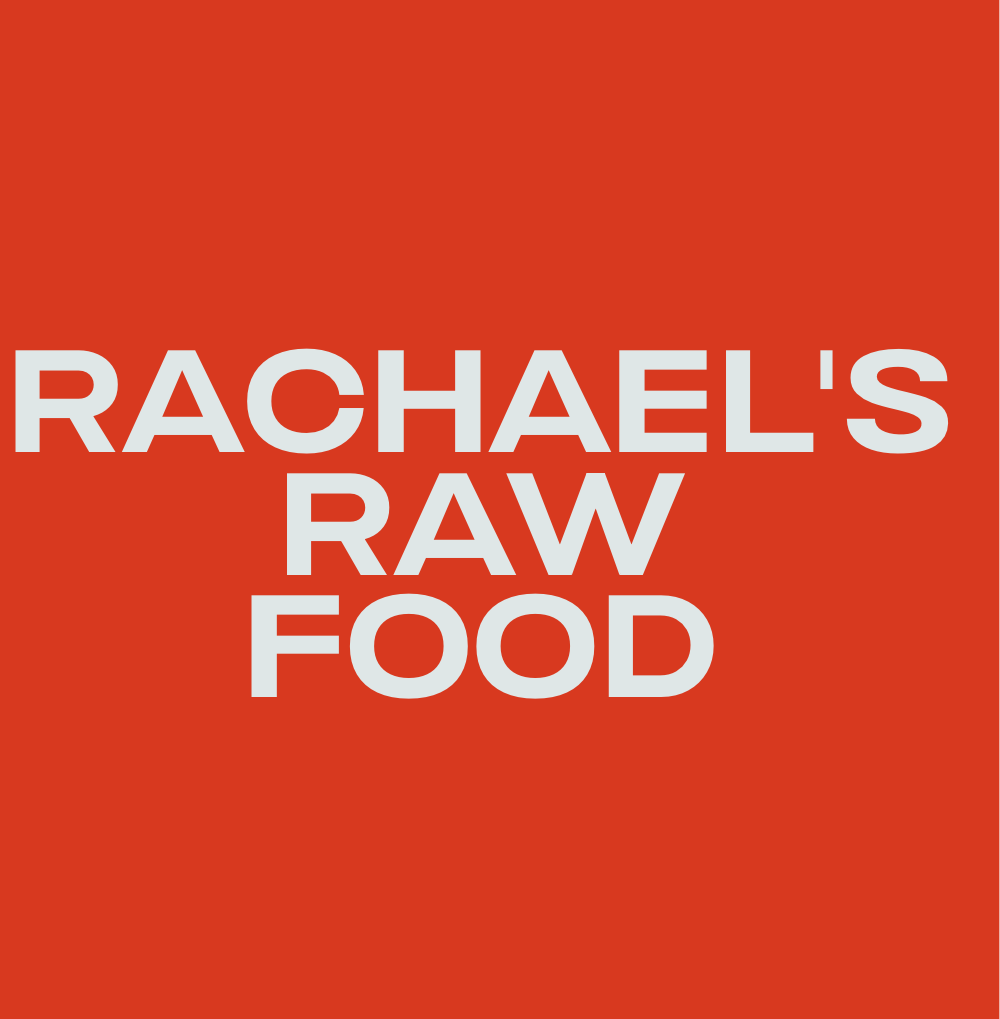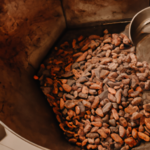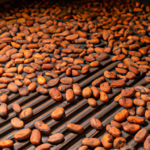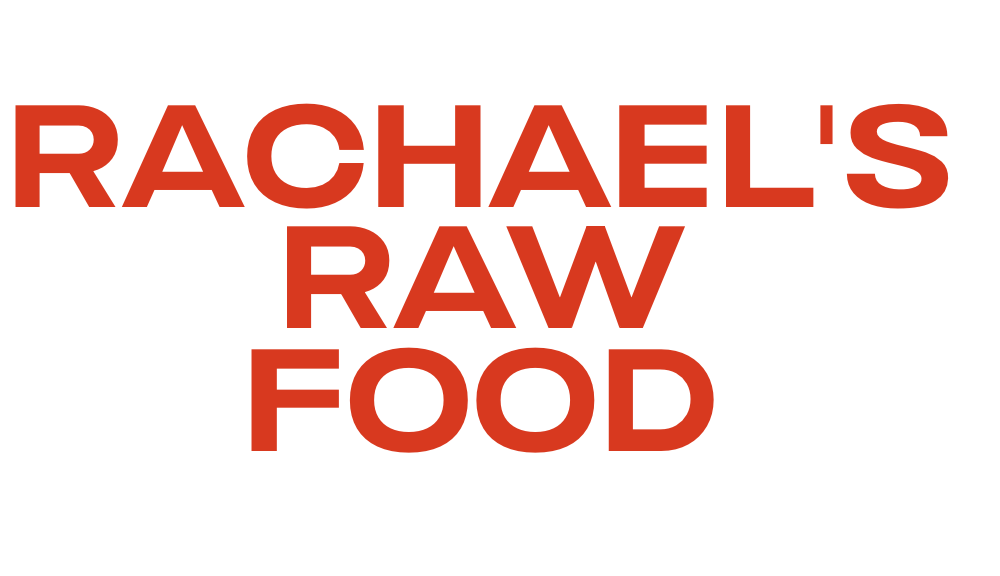Raw Food Ingredients
How To Prepare Raw Cacao Beans
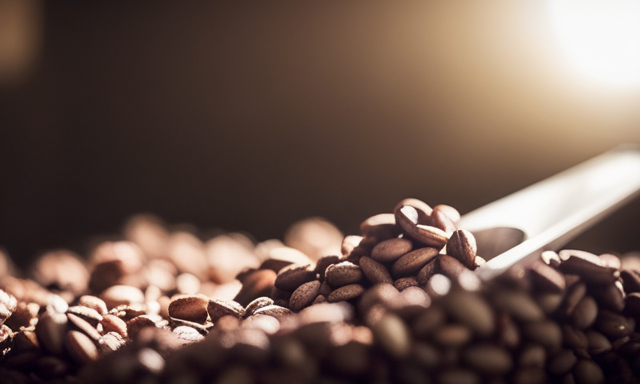
Have you ever thought about how to unleash the full potential of raw cacao beans? Well, you’re in luck! In this article, I will walk you through the intriguing process of preparing raw cacao beans to create your own tasty homemade chocolate.
As a cacao enthusiast, I have spent countless hours experimenting and perfecting the art of working with these precious beans. Get ready to embark on a culinary adventure as we explore the origins of cacao, how to source and select the best beans, and the meticulous steps involved in transforming them into a smooth, rich chocolate delight.
From sorting and cleaning the beans to roasting them for optimal flavor, we will cover it all. So, grab your apron and prepare to immerse yourself in the wonderful world of raw cacao beans!
Key Takeaways
- Health benefits of raw cacao beans include antioxidants, magnesium, and iron.
- Sourcing high-quality cacao beans involves finding farms with sustainable practices.
- Factors such as variety, fermentation, and region can affect the flavor profile of cacao beans.
- Cleaning, roasting, removing shells, and grinding cacao beans are important steps in preparing raw cacao beans for chocolate-making.
Understanding the Origins of Cacao Beans
Now that you’ve got your hands on those raw cacao beans, let’s dive into the fascinating world of where they come from!
The origins of cacao cultivation can be traced back to ancient Mesoamerican civilizations such as the Mayans and Aztecs. These civilizations revered cacao as a sacred plant and used it in religious rituals and medicinal remedies.
Fast forward to modern times, and we now know that raw cacao beans are packed with health benefits. They are rich in antioxidants, which can help reduce inflammation and protect against chronic diseases. Additionally, cacao beans contain minerals like magnesium and iron, as well as mood-enhancing compounds like phenethylamine and anandamide.
Understanding the origins of cacao beans gives us a deeper appreciation for their nutritional value and cultural significance. Now, let’s explore how to source and select high-quality cacao beans.
Sourcing and Selecting High-Quality Cacao Beans
When searching for the best cacao beans for chocolate production, it’s crucial to look for farms that prioritize sustainable practices, such as using organic fertilizers and employing fair trade principles. For example, the small family-owned cacao farm in Costa Rica ensures their beans are harvested at peak ripeness.
To source high-quality cacao beans, there are a few challenges to consider. Firstly, finding farms that meet the necessary sustainability criteria can be difficult. Additionally, identifying farms that produce beans with desirable flavor profiles is essential for creating excellent chocolate.
When selecting cacao beans, it is important to consider factors such as the variety of the beans, the fermentation process they undergo, and the region they are grown in. Each of these elements contributes to the unique flavor profile of the beans, which ultimately affects the taste of the chocolate produced.
In the subsequent section about sorting and cleaning the cacao beans, we will discuss how to prepare the beans for further processing without compromising their quality.
Sorting and Cleaning the Cacao Beans
To ensure the absolute best flavor and quality of your chocolate, you’ll want to meticulously sort and clean those precious cacao beans. This involves making sure every single one is free from impurities and ready to be transformed into a delectable treat.
Cleaning the cacao beans is an essential step in the preparation process. There are various cleaning methods available, but the most common one involves using a winnowing basket or a sieve. This helps to remove any unwanted debris, such as dirt, stones, or broken beans.
Additionally, specialized equipment like a vacuum cleaner or an air blower can be used to further eliminate any remaining impurities. By employing these cleaning methods, you ensure that only the best beans make it to the next step: roasting the cacao beans for optimal flavor.
Roasting the Cacao Beans for Optimal Flavor
For the best flavor and quality in your chocolate, you’ll want to roast the cacao beans until they reach their optimal flavor, typically around 250 degrees Fahrenheit. Roasting the cacao beans is a crucial step in the chocolate-making process as it brings out the complex flavors and aromas hidden within the beans.
Different roasting techniques can result in varying flavor profiles, allowing chocolate makers to create unique and distinctive products. Here are three key factors to consider when roasting cacao beans:
-
Time: Roasting time can affect the flavor intensity of the beans. Longer roasting times can result in a deeper, richer flavor, while shorter times may produce a milder taste.
-
Temperature: The temperature at which the beans are roasted can impact the development of flavors. A higher temperature can result in a more pronounced and robust flavor profile.
-
Evenness: Ensuring that the beans are evenly roasted is essential to achieve a consistent flavor throughout the batch. Stirring the beans regularly during roasting helps to achieve this.
By carefully controlling these factors, chocolate makers can create a wide range of flavor profiles to suit different preferences.
Once the cacao beans are roasted to perfection, the next step involves removing the cacao bean shells.
Removing the Cacao Bean Shells
After roasting, it’s time to shed the outer layer of the cacao beans. This step is crucial in the bean processing to ensure the final product is smooth and enjoyable. To remove the cacao bean shells, I use a process called winnowing.
First, I place the roasted beans in a large bowl and gently toss them. The goal is to separate the shells from the nibs, which are the inner part of the bean. As I toss the beans, I blow gently over the bowl to help the lighter shells fly away, leaving behind the precious nibs.
This winnowing process not only removes the shells but also allows me to collect them for alternative uses, such as making tea or composting.
Once the winnowing is complete, I can now move on to the next step of grinding the cacao beans into a fine paste, unlocking their rich flavors and aromas.
Grinding the Cacao Beans into a Fine Paste
Grinding the cacao beans transforms them into a luscious paste that releases their decadent flavors and intoxicating aromas. Achieving a fine paste consistency is crucial in order to fully appreciate the rich taste of the cacao.
There are various traditional grinding methods that can be used to achieve this desired texture. These methods include using a stone grinder, a food processor, or a specialized cacao grinder. Regardless of the method chosen, the key is to grind the beans until they form a smooth and velvety paste.
This process allows the flavors to meld together and intensify, creating a truly indulgent experience. Once the cacao beans have been ground to perfection, the next step is to add sweeteners and flavorings to the cacao paste, enhancing its natural richness.
Adding Sweeteners and Flavorings to the Cacao Paste
To truly enhance the cacao paste’s natural richness, it’s essential to incorporate sweeteners and flavorings. Sweeteners not only add a touch of sweetness but also help balance the inherent bitterness of raw cacao. There are various options to choose from, such as honey, maple syrup, agave nectar, or coconut sugar. Each sweetener brings its own unique flavor profile, so it’s important to experiment and find the one that complements your taste preferences. As for flavoring ideas, you can explore adding vanilla extract, cinnamon, or even a pinch of sea salt to enhance the complexity of the chocolate. By carefully selecting the right combination of sweeteners and flavorings, you can create a truly delightful treat. Now, let’s move on to the next step of tempering and molding the chocolate.
Tempering and Molding the Chocolate
After adding the sweeteners and flavorings to the cacao paste, it’s time to move on to the next crucial step: tempering and molding the chocolate.
Tempering is a process that involves carefully heating and cooling the chocolate to ensure smoothness, shine, and a satisfying snap when bitten into. There are several tempering techniques you can use, such as seeding or tabling, which help to stabilize the cocoa butter crystals in the chocolate.
Once the chocolate is properly tempered, it is ready to be molded into various shapes and forms. When molding the chocolate, it’s important to consider factors like temperature, cleanliness, and the type of mold being used.
A few helpful chocolate molding tips include ensuring the molds are clean and dry, gently tapping the molds to remove any air bubbles, and refrigerating the molded chocolates until they are firm.
With the tempering and molding process complete, it’s time to move on to the next step: enjoying the fruits of your labor by tasting and storing homemade chocolate.
Enjoying the Fruits of Your Labor: Tasting and Storing Homemade Chocolate
Now that you’ve gone through the painstaking process of tempering and molding your homemade chocolate, it’s time to savor the bittersweet irony of all your hard work as you bite into that store-bought candy bar instead. But fear not, for the fruits of your labor are worth it. To fully appreciate the flavors and nuances of your homemade chocolate, it’s important to employ proper tasting techniques. Start by taking a small piece and allowing it to melt on your tongue, paying attention to the texture and mouthfeel. Notice the aromas and flavors that emerge, such as hints of fruitiness or earthiness. To ensure the longevity of your homemade chocolate, proper storage is crucial. Keep it in a cool, dry place away from sunlight and strong odors. Consider using an airtight container or wrapping it in foil to prevent moisture and air exposure. By following these steps, you can enjoy your homemade chocolate for weeks to come.
| Tasting Techniques | Chocolate Storage |
|---|---|
| Take small piece and allow it to melt on tongue | Store in cool, dry place away from sunlight and strong odors |
| Pay attention to texture and mouthfeel | Consider using airtight container or foil wrapping |
| Observe aromas and flavors that emerge | Prevent moisture and air exposure |
| Appreciate hints of fruitiness or earthiness | Ensure longevity of homemade chocolate |
Frequently Asked Questions
How long do raw cacao beans stay fresh after they have been roasted?
To extend the shelf life of roasted cacao beans, store them in an airtight container in a cool, dark place. Signs that they have gone bad include a rancid smell, mold growth, or a change in color and texture.
Can I use any type of sweetener to add to the cacao paste?
Sure, you can use various alternative sweeteners like honey, maple syrup, or coconut sugar to enhance the flavor of cacao paste. These options not only add sweetness but also provide additional health benefits like antioxidants and minerals.
What is the best way to store homemade chocolate to maintain its freshness?
The best way to store homemade chocolate to maintain its freshness is by using airtight storage containers made of glass or metal. Avoid using plastic containers as they may affect the flavor. Additionally, using alternative sweeteners like honey or maple syrup can help prolong the shelf life.
Do I need any special equipment to grind the cacao beans into a fine paste?
To grind cacao beans into a fine paste, special equipment such as a grinder or food processor is recommended. These grinding methods help break down the beans’ solid structure, resulting in a smooth texture. Additionally, alternative sweeteners can be added for a customized taste.
Can I skip the step of removing the cacao bean shells if I want a more rustic texture in my homemade chocolate?
Skipping the step of removing cacao bean shells can result in a more rustic texture for homemade chocolate. However, it’s important to note that the shells can add bitterness. Consider using alternative sweeteners to balance the flavors.
What is the Difference Between Fermented and Unfermented Raw Cacao Beans in Preparation?
In this fermenting raw cacao beans tutorial, it’s crucial to understand the difference between fermented and unfermented raw cacao beans. Fermented cacao beans undergo a natural fermentation process, developing rich and complex flavors, while unfermented beans have a milder taste with higher acidity. Understanding this difference is key to proper cacao bean preparation.
Conclusion
Preparing raw cacao beans is a journey that takes us back to the ancient origins of chocolate. By sourcing high-quality beans, sorting and cleaning them, and roasting them to perfection, we unlock the true potential of their flavors.
Removing the shells and grinding the beans into a smooth paste allows us to create a canvas for adding sweeteners and flavorings, resulting in a personalized chocolate experience.
Tempering and molding the chocolate adds the finishing touch, and finally, we can savor the fruits of our labor.
So go ahead, indulge in the rich, scientific artistry of homemade chocolate and let your taste buds embark on a delightful expedition.
Rachael, the Editor in Chief of RachaelsRawFood.com, is an inspiring and passionate individual who has dedicated her life to promoting the benefits of a raw food lifestyle. Known for her vibrant and energetic personality, Rachael has built a strong online presence that has transformed her personal journey into a thriving community of raw food enthusiasts.
Raw Food Ingredients
How Much Caffeine in Cocoa?
Not all cocoa products are created equal when it comes to caffeine content – discover which one might surprise you!

When evaluating the caffeine levels in cocoa, it’s important to recognize that dark chocolate contains around 43 mg of caffeine per 100 grams due to its high cocoa solid content. Dark chocolate has a higher caffeine content compared to milk or white chocolate. This means that consuming dark chocolate in moderation can assist in managing your caffeine intake. On the other hand, milk chocolate has around 20 mg of caffeine per 100 grams while white chocolate is caffeine-free. Cocoa powder, commonly used in baking and beverages, contains a substantial 230 mg of caffeine per 100 grams. Being aware of these distinctions in chocolates can help you make informed decisions about your caffeine consumption.
Key Takeaways
- Caffeine content in cocoa varies based on cocoa solid concentrations.
- Unsweetened cocoa powder can contain around 230 mg of caffeine per 100 grams.
- Roasting cocoa solids influences the final caffeine content in cocoa products.
- Dark chocolate, with high cocoa solid content, has more caffeine than milk chocolate.
- Moderate consumption of cocoa products helps manage caffeine intake.
Caffeine Content in Dark Chocolate
Dark chocolate boasts a caffeine content of approximately 43 mg per 100 grams, mainly deriving from its higher cocoa solid composition. When we indulge in this decadent treat, we aren't only savoring its rich cocoa flavor but also a subtle caffeine kick. Compared to milk or white chocolate, dark chocolate contains a higher amount of caffeine.
Please bear in mind that moderate consumption of dark chocolate can assist individuals in managing their caffeine intake effectively. The caffeine levels in dark chocolate are about one-fourth of what you'd find in a standard cup of coffee. So, if you're looking for a milder caffeine boost, a piece of dark chocolate might just do the trick without the jitters that sometimes accompany a strong cup of coffee.
Enjoy your dark chocolate in moderation, savoring both its taste and the gentle pick-me-up it provides.
Caffeine Levels in Milk Chocolate

Milk chocolate, known for its creamy texture and sweet flavor, contains a modest caffeine content of approximately 5.6 mg per ounce, as indicated by USDA data. Unlike dark chocolate, milk chocolate has a lighter color due to lower cocoa content, resulting in reduced caffeine levels.
The delightful creamy taste in milk chocolate comes from a harmonious blend of cocoa and milk powder. While dark chocolate boasts higher caffeine content, milk chocolate remains a popular choice for those seeking a sweet treat with minimal caffeine intake.
Caffeine Presence in White Chocolate
With its unique composition excluding cocoa solids, white chocolate stands out as a caffeine-free alternative to its darker counterparts. White chocolate is crafted from a blend of cocoa butter, milk powder, sugar, and vanilla, making it a delectable treat without the stimulating effects of caffeine. For individuals sensitive to caffeine, white chocolate offers a creamy texture and indulgent flavor without the worry of unwanted side effects. This makes it a popular choice for desserts among those looking to steer clear of caffeine in their sweet treats.
Compared to dark chocolate, which contains cocoa solids and hence caffeine, white chocolate provides a caffeine-free option for those seeking a more mellow indulgence. So, if you're in the mood for a luscious and smooth chocolate experience without the buzz of caffeine, white chocolate is the perfect choice for your next dessert delight.
Impact of Cocoa Solids on Caffeine

In determining the caffeine levels in cocoa products, the percentage of cocoa solids plays a significant role. Here are some key points about the impact of cocoa solids on caffeine content:
- Caffeine Derivation: The caffeine content in cocoa primarily comes from cocoa solids, making it an important factor in determining the overall caffeine levels in cocoa-based products.
- Dark Chocolate: Dark chocolate, known for its higher cocoa solid content, tends to contain more caffeine compared to milk or white chocolate varieties due to this higher concentration.
- Unsweetened Cocoa Powder: A 100g serving of unsweetened cocoa powder can contain around 230mg of caffeine, reflecting the impact of the high cocoa solid content in this form.
- Health Benefits: The roasting process of cocoa solids not only affects the flavor profile but also influences the caffeine content, contributing to the potential health benefits associated with consuming cocoa products like hot cocoa.
Comparing Caffeine in Different Chocolates
Comparing the caffeine content in different chocolates reveals varying levels based on their cocoa solid concentrations. Dark chocolate contains about 43 mg of caffeine per 100 grams, making it a stronger caffeinated option compared to milk chocolate, which only has around 20 mg per 100 grams.
Surprisingly, white chocolate, derived from cocoa butter, doesn't contain any caffeine at all. For those seeking a more potent caffeine kick, cocoa powder is the way to go, boasting a high concentration of 230 mg per 100 grams.
The amount of caffeine in chocolate products is closely linked to the cocoa solid content, with dark chocolate containing the highest levels. So, the next time you're craving a chocolate treat but also need a little energy boost, opt for dark chocolate to get the most caffeine per bite.
Frequently Asked Questions
Is There More Caffeine in Cocoa Than Coffee?
There's more caffeine in cocoa than in coffee. Cocoa powder packs 230 mg per 100 grams, surpassing most coffee varieties. Dark chocolate has even more caffeine due to higher cocoa content. It's a rich, unique energy source.
Is There a Lot of Caffeine in Hot Cocoa?
There isn't a lot of caffeine in hot cocoa. It depends on the brand and recipe. Starbucks hot chocolate has around 25 mg per serving, while basic mixes have about 5 mg. The amount of cocoa powder used influences the caffeine content.
Is There Caffeine in Hershey's Cocoa?
Absolutely, Hershey's Cocoa does contain caffeine, but it's not overwhelming. It adds a delightful hint of energy in each spoonful. Perfect for baking or a cozy cup of hot chocolate. Just the right amount!
Is Cocoa a Stimulant Like Caffeine?
Cocoa stimulates like caffeine due to its theobromine content. Decaf versions offer a solution for caffeine-sensitive folks. Options include regular cocoa with caffeine, Dutch-processed cocoa with less, and decaf cocoa with reduced caffeine while keeping healthful compounds.
What are the potential health effects of consuming high levels of caffeine in cocoa?
Unveiling cocoa caffeine levels can lead to potential health effects of excessive consumption. High levels of caffeine in cocoa may contribute to insomnia, nervousness, and fast heartbeat. It can also cause gastrointestinal discomfort and exacerbate anxiety disorders. Moderation in consuming caffeinated cocoa products is recommended for overall health.
Conclusion
To sum up, the caffeine content in cocoa varies depending on the type of chocolate. Dark chocolate typically has the highest caffeine levels, followed by milk chocolate and white chocolate. The amount of cocoa solids in the chocolate also affects the caffeine content.
Remember, just like different chocolates have different levels of caffeine, we all have unique strengths and abilities. Embrace your individuality and always aim for balance in everything you do.
Rachael, the Editor in Chief of RachaelsRawFood.com, is an inspiring and passionate individual who has dedicated her life to promoting the benefits of a raw food lifestyle. Known for her vibrant and energetic personality, Rachael has built a strong online presence that has transformed her personal journey into a thriving community of raw food enthusiasts.
Raw Food Ingredients
5 Key Differences: Caffeine Content in Cocoa Vs Coffee
Open the door to understanding the contrasting caffeine levels in cocoa and coffee, revealing surprising insights that will reshape your beverage choices.
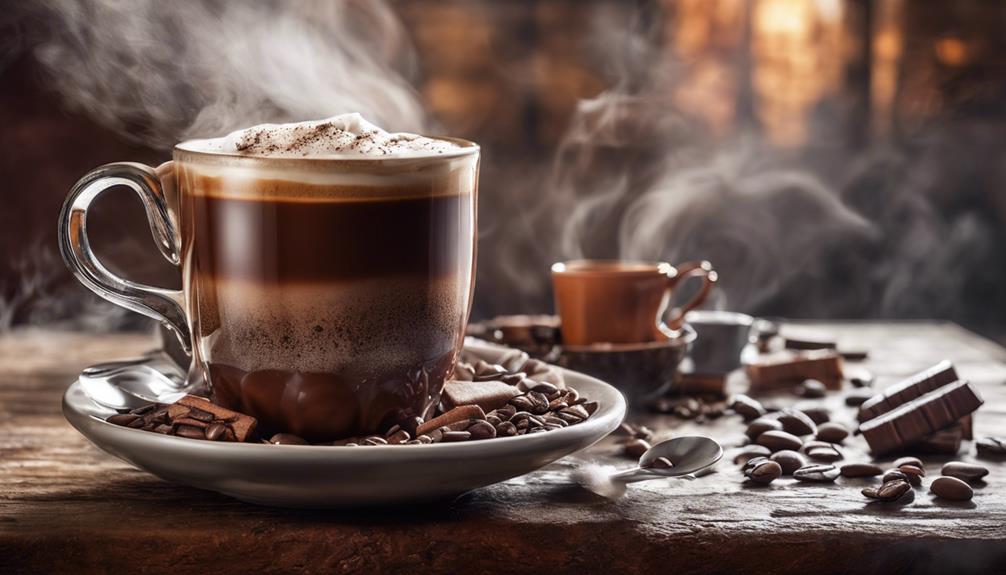
When comparing the caffeine levels in cocoa and coffee, it is important to understand that cocoa generally has lower caffeine content than coffee. Dark chocolate contains approximately 12 milligrams of caffeine per ounce, while hot cocoa typically ranges from 5 to 10 milligrams per ounce. In contrast, brewed coffee can have significantly higher levels, varying from 95 to 165 milligrams per 8-ounce cup.
Cocoa is considered a milder option for individuals aiming to limit their caffeine intake, with theobromine providing a gradual energy increase. Meanwhile, coffee's caffeine content offers immediate alertness, and understanding these distinctions can help you select based on your preferred effects.
Key Takeaways
- Cocoa contains lower caffeine levels but compensates with theobromine for a gradual energy increase.
- Coffee has higher caffeine content, offering an immediate alertness boost and potentially higher metabolic rate.
- Theobromine in cocoa promotes relaxation, while caffeine in coffee provides intense alertness and mood fluctuations.
- Hot chocolate is a good option for reducing caffeine intake while still benefiting from theobromine effects.
- Understanding caffeine variances helps make informed choices for desired energy levels and mood effects.
Caffeine Levels in Cocoa Vs Coffee
When comparing caffeine levels in cocoa versus coffee, it's evident that cocoa generally contains lower amounts per serving. Dark chocolate, made from cacao beans, contains around 12 milligrams of caffeine per ounce, while a 1-ounce serving of hot cocoa mix typically has 5-10 milligrams. Even a 16-ounce serving of Starbucks hot chocolate only contains about 25 milligrams of caffeine.
On the other hand, coffee, when brewed, can range from 95 to 165 milligrams of caffeine per 8-ounce cup, depending on the type and brewing method. This significant difference in caffeine content between cocoa and coffee makes cocoa a milder option for those looking to limit their caffeine intake.
Impact on Alertness and Energy

Typically, the immediate alertness and energy boost from caffeine in coffee can last for hours. This surge in alertness is due to caffeine's stimulating effect on the central nervous system. On the other hand, cocoa contains theobromine, which provides a more gradual increase in energy levels. Unlike caffeine, theobromine doesn't cause sudden spikes and crashes, offering a smoother energy curve.
Coffee's caffeine content can temporarily boost the metabolic rate, potentially supporting weight management efforts. This increased metabolic rate can aid in burning calories and may contribute to weight loss when combined with a balanced diet and regular exercise. Additionally, theobromine in cocoa contributes to the thermogenic effect, leading to mild calorie burning in the body.
Both caffeine and theobromine can influence mood. Caffeine tends to provide a more intense and quick-acting mood elevation, while theobromine promotes feelings of relaxation and contentment. Understanding the differences in alertness, energy, metabolic effects, and mood enhancements between cocoa and coffee can help individuals make informed choices based on their preferences and wellness goals.
Metabolic Variances and Effects
Regarding metabolic variances and effects, the varying caffeine levels between cocoa and coffee play a significant role. When comparing the metabolic impact of caffeine in cocoa and coffee, it is crucial to note that cocoa contains lower levels of caffeine but compensates with theobromine, which aids in the thermogenic effect, promoting calorie burning and metabolic activity. On the other hand, coffee, especially brewed varieties, contains higher levels of caffeine, potentially providing a temporary boost to the metabolic rate, which could assist in weight management. While caffeine in coffee offers a quick energy surge, theobromine in cocoa leads to a more gradual rise in energy levels, avoiding sudden spikes and crashes. To summarize the metabolic differences, I've created a table below:
| Aspect | Cocoa | Coffee |
|---|---|---|
| Caffeine Content | Lower levels | Higher levels |
| Additional Component | Theobromine | Caffeine |
| Metabolic Impact | Thermogenic effect | Temporary metabolic rate boost |
| Energy Levels | Gradual rise | Quick surge |
| Weight Management | Aids in calorie burning | Potential assistance |
Mood Enhancement Disparities

In comparing the mood enhancement effects of theobromine in cocoa and caffeine in coffee, notable disparities emerge in their impact on mental well-being.
The theobromine found in cocoa promotes relaxation and contentment, offering a gradual rise in energy levels that leads to a gentle and long-lasting mood enhancement experience.
On the other hand, caffeine delivers an intense and fast-acting boost in alertness, providing immediate energy levels that can lead to abrupt spikes and crashes.
While both theobromine and caffeine uplift mood, theobromine's effects are characterized by a steady and gradual increase in energy levels, creating a sense of calm and contentment.
In contrast, caffeine's impact is more intense and temporary, resulting in rapid alertness but also the potential for fluctuations in mood. Understanding these differences can help individuals choose between cocoa and coffee based on their desired mood enhancement effects.
Health Implications and Considerations
Health implications and considerations surrounding caffeine consumption warrant close attention due to its potential impact on various aspects of well-being. When comparing a cup of coffee to hot chocolate, it's vital to note the amount of caffeine present.
While coffee contains much caffeine, hot chocolate has less caffeine but isn't entirely devoid of it. The main active ingredients in hot chocolate are theobromine and caffeine, where theobromine is a relative of caffeine and also has stimulant effects, although milder. If you're looking to reduce your caffeine intake, opting for hot chocolate over a cup of coffee can be a good choice.
Being mindful of the caffeine content in chocolate products is important, especially if you're sensitive to caffeine or belong to vulnerable populations like children or pregnant women. Understanding the caffeine levels in different beverages allows you to make informed decisions about your consumption for better overall health.
Frequently Asked Questions
Is There Caffeine in Coffee Vs Cacao Powder?
Yes, there is caffeine in coffee, with around 140 milligrams in a 12-ounce cup. On the other hand, cacao powder contains only about 12 milligrams per tablespoon, making it a great caffeine-free alternative for those seeking a milder boost.
What Is the Difference Between Cocoa and Coffee?
When comparing cocoa and coffee, cocoa offers a rich, chocolatey flavor and is packed with antioxidants and minerals. Coffee, on the other hand, provides a robust, bitter taste and a jolt of caffeine for that morning pick-me-up.
Why Is Cocoa Better Than Coffee?
I believe cocoa is superior to coffee because it offers a gentler energy boost, promotes relaxation and contentment, and provides sustained vitality without sudden crashes. Plus, dark chocolate's theobromine supports cellular health and tastes delicious.
How Much Caffeine Is in Cocoa Powder Vs Decaf Coffee?
In cocoa powder vs decaf coffee, cocoa has 12-26mg of caffeine per tbsp, while decaf coffee holds 2-5mg per 8-ounce cup. The choice hinges on desired caffeine levels and flavor. I prefer cocoa's lower caffeine content.
How does the caffeine content in hot chocolate compare to coffee?
Hot chocolate caffeine content is significantly lower than that of coffee. While an 8-ounce cup of hot chocolate contains about 5-10 milligrams of caffeine, the same size of coffee can have anywhere from 95-200 milligrams. It’s a notable difference for those looking to limit their caffeine intake.
Conclusion
To sum up, while cocoa and coffee both contain caffeine, the levels vary significantly. Cocoa generally has lower caffeine content compared to coffee, impacting alertness, energy levels, and mood enhancement differently.
It's crucial to keep these differences in mind when choosing between the two beverages for your daily consumption. Remember, moderation is key to maintaining a healthy balance in your caffeine intake.
So, whether you prefer a cup of cocoa or a mug of coffee, enjoy it in moderation for the best benefits!
Rachael, the Editor in Chief of RachaelsRawFood.com, is an inspiring and passionate individual who has dedicated her life to promoting the benefits of a raw food lifestyle. Known for her vibrant and energetic personality, Rachael has built a strong online presence that has transformed her personal journey into a thriving community of raw food enthusiasts.
Raw Food Ingredients
A Guide to Becoming a Good King
Kingship demands wisdom, fairness, integrity, courage, and humility – essential traits for a successful reign and prosperous kingdom." Keep reading to uncover the secrets of becoming a good king.

In order to be a good king, one must embody wisdom, fairness, integrity, courage, and humility to lead the kingdom with honor. Wisdom is essential for making important decisions, fairness ensures just treatment for all, integrity builds trust and respect, courage is crucial for facing challenges, and humility reminds us of our humanity. Historical kings such as Solomon, Arthur, David, Charlemagne, and Ramses II serve as role models for these leadership traits.
As a king, embracing challenges, understanding the world, seeking personal growth, and learning from the past are essential responsibilities. Developing leadership skills, making wise decisions, and prioritizing the well-being of the people are key to effective kingship. Every step on the path to becoming a good king is critical for a successful reign and prosperous kingdom.
Key Takeaways
- Embrace wisdom for informed decisions.
- Practice fairness for just treatment.
- Uphold integrity to earn trust.
- Show courage in facing challenges.
- Maintain humility for empathy and respect.
Qualities of a Good King
Being a good king requires embodying qualities such as wisdom, fairness, integrity, courage, humility, and compassion in decision-making and leadership. Power comes with responsibility, and as a king, it's essential to wield this power wisely. Wisdom is vital in making sound judgments that benefit the kingdom as a whole. Fairness guarantees that all subjects are treated justly and equitably, fostering a harmonious society. Integrity is the foundation of trust and respect, key elements in effective leadership.
Courage is necessary to face challenges and make difficult decisions, even when met with opposition. Humility reminds a king of his humanity and the importance of humility in interactions with all subjects. Compassion demonstrates a king's care and empathy towards his people, fostering a sense of unity and loyalty. Effective communication is crucial for conveying decisions, listening to concerns, and inspiring confidence in leadership.
Historical Kings as Role Models

King Solomon, renowned for his wisdom and leadership, stands as an exemplar among historical kings who serve as role models for future leaders. Looking at figures like King Arthur, known for his justice and valor in medieval legends, and King David, celebrated for his faith and courage in battle, we find lessons that transcend time. Charlemagne's legacy of military conquests and cultural revival, alongside Ramses II's grand building projects and military campaigns, offer diverse insights into effective kingship. Below is a table summarizing key attributes of these historical kings:
| King | Attributes |
|---|---|
| King Solomon | Wisdom, leadership |
| King Arthur | Justice, valor |
| King David | Faith, courage |
| Charlemagne | Military prowess, culture revival |
| Ramses II | Building projects, military campaigns |
Studying these historical figures can provide valuable lessons on the multifaceted qualities that make a great ruler.
Responsibilities of Kingship
Embracing challenges and living authentically are central to fulfilling the responsibilities inherent in kingship. As men aspiring to be good kings, it's essential for us to understand that the world requires leaders who are kind, humble, and committed to personal growth.
The journey to becoming a good king involves more than just wielding power and responsibility—it entails sacrificing comfort for growth and transformation. Seeking the ancient path of masculinity, as exemplified by figures like Morgan, teaches us the importance of humility, vulnerability, and character development.
In fulfilling the responsibilities of kingship, we're entrusted with power not for our own gain, but for the betterment of the world around us. Just as seeds need Good Soil to flourish, we must nurture our own growth to lead effectively.
Leadership Skills for Kings

Developing essential leadership skills is crucial for aspiring kings seeking to fulfill their responsibilities with humility, vulnerability, and a focus on character development. As you study the world around us, the power and responsibility of what kingship entails become clearer. Here are some key points to think about on your path to becoming a king:
- Embrace challenges and live authentically.
- Seek ancient paths of masculinity for guidance.
- Reflect on your identity, purpose, and ability to be entrusted with power for good.
- Sacrifice comfort for growth, transformation, and participation in universal creativity.
The journey of becoming a king isn't just about gaining authority but about understanding the remarkable fellowship of like-hearted individuals who share similar goals. Engage in group discussion questions, consider between-session personal study, and explore the depths of your masculine soul. This is the path to restoring what it means to be a true king.
Importance of Wise Decision-Making
Steering through the intricacies of leadership, especially in the domain of kingship, requires a sharp focus on the art of prudent decision-making. Wise decision-making is like the compass guiding the ship of leadership towards success.
Good kings understand that their choices impact not just themselves but also the lives of those they rule over. They prioritize the well-being of their people over personal gains, embodying the essence of true leadership.
Seeking counsel from trusted advisors and reflecting on core values are essential practices in the domain of wise decision-making. By embracing humility and self-awareness, kings can navigate the complex web of choices with clarity and integrity.
Just like a six-session video Bible study can guide individuals in restoring the heart, wise decision-making is essential for becoming the kind of leaders our world needs. Let's start on this journey of radical reconstruction, where every decision is a step towards being counted among the good kings of history.
Frequently Asked Questions
What Is the Becoming a King Guide?
The Becoming a King guide is a transformative resource created by Morgan Snyder to help men grow into responsible kings. It offers practical tools and profound insights to aid personal development and transformation.
What Are the Qualities of a Good King?
Being a good king means embodying humility, wisdom, and integrity. Prioritizing the well-being of my people, making decisions for the greater good, and showing courage, justice, and compassion in all actions. Seeking counsel and valuing diverse perspectives is essential.
What Makes a True King?
Beneath the crown lies a heart that beats with humility and a spirit that soars with honor. True kings are forged in the fires of challenge, embracing authenticity and growth to inspire others.
What Makes a Real King?
Being a true king means embodying humility, courage, and empathy. It's about serving others and leading with integrity. I endeavor to cultivate these qualities daily, embracing challenges and seeking growth in all aspects of my life.
How Can Sacred Cacao be Incorporated Into Kingship Rituals?
In kingship rituals, the sacred cacao ritual holds great significance. The ceremonial drinking of cacao symbolizes the divine connection between the ruler and the spiritual realm. It is believed to impart wisdom and strength, making it a crucial element in the coronation and leadership rites of many cultures.
Conclusion
To sum up, becoming a good king requires a combination of qualities, skills, and responsibilities. Remember, 'With great power comes great responsibility.'
By studying historical kings as role models, practicing leadership skills, and making wise decisions, one can aspire to be a just and effective ruler.
It's a challenging path, but with dedication and perseverance, anyone can endeavor to be a worthy leader for their kingdom.
Rachael, the Editor in Chief of RachaelsRawFood.com, is an inspiring and passionate individual who has dedicated her life to promoting the benefits of a raw food lifestyle. Known for her vibrant and energetic personality, Rachael has built a strong online presence that has transformed her personal journey into a thriving community of raw food enthusiasts.
-

 Raw Food Ingredients2 months ago
Raw Food Ingredients2 months agoHow To Make Hot Chocolate With Raw Cacao Powder
-

 Raw Food Ingredients2 months ago
Raw Food Ingredients2 months agoHow To Make Chocolate From Raw Cacao
-
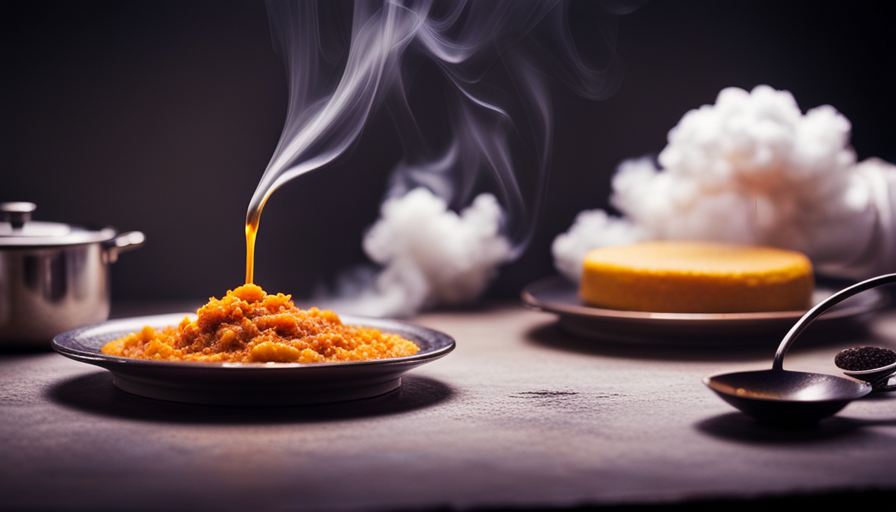
 What is Raw Food?2 weeks ago
What is Raw Food?2 weeks agoHow To Remove Raw Mustard Oil Smell From Cooked Food
-

 Raw Food Ingredients4 weeks ago
Raw Food Ingredients4 weeks agoRaw Cacao Powder How Much For 8 Oz Hot Chocolate Recipe
-

 Raw Food Ingredients4 weeks ago
Raw Food Ingredients4 weeks agoThe Truth Behind the Cacao Caffeine Myth
-
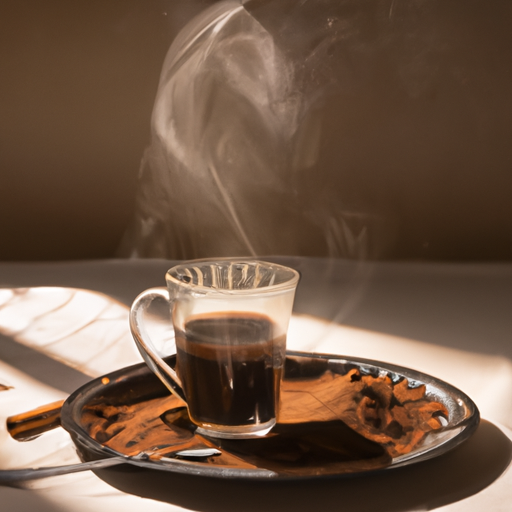
 Raw Food Ingredients2 months ago
Raw Food Ingredients2 months agoWhen Fasting Can I Drink Coffee With Raw Cacao Powder
-
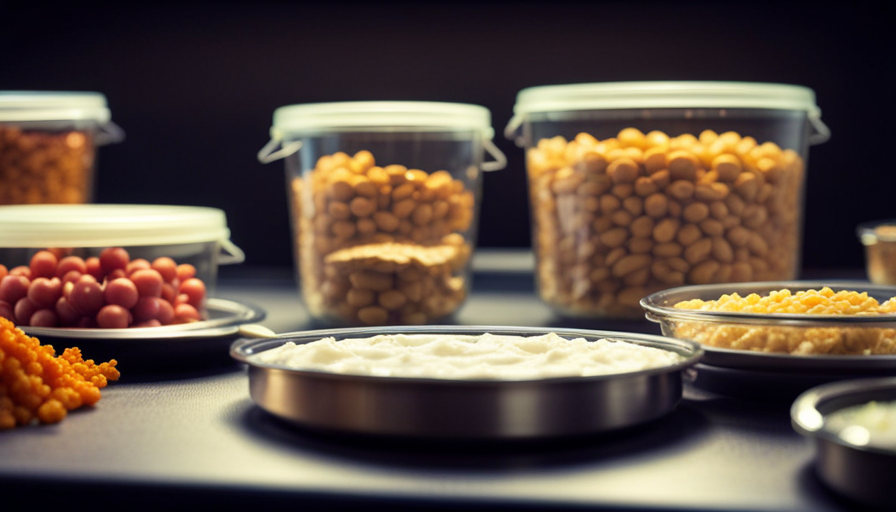
 What is Raw Food?2 weeks ago
What is Raw Food?2 weeks agoHow To Store Raw And Cooked Food Separately
-
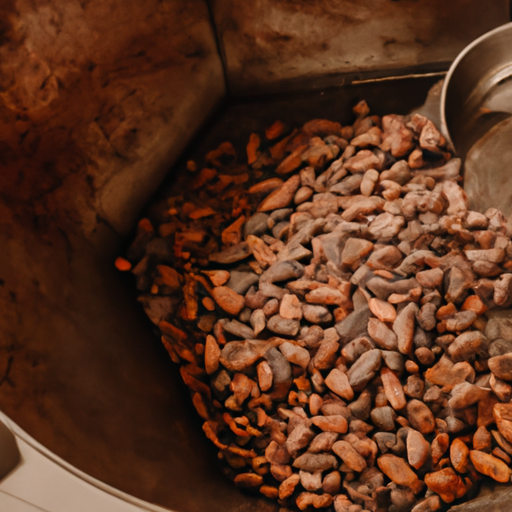
 Raw Food Ingredients2 months ago
Raw Food Ingredients2 months agoHow To Use Raw Cacao Beans
